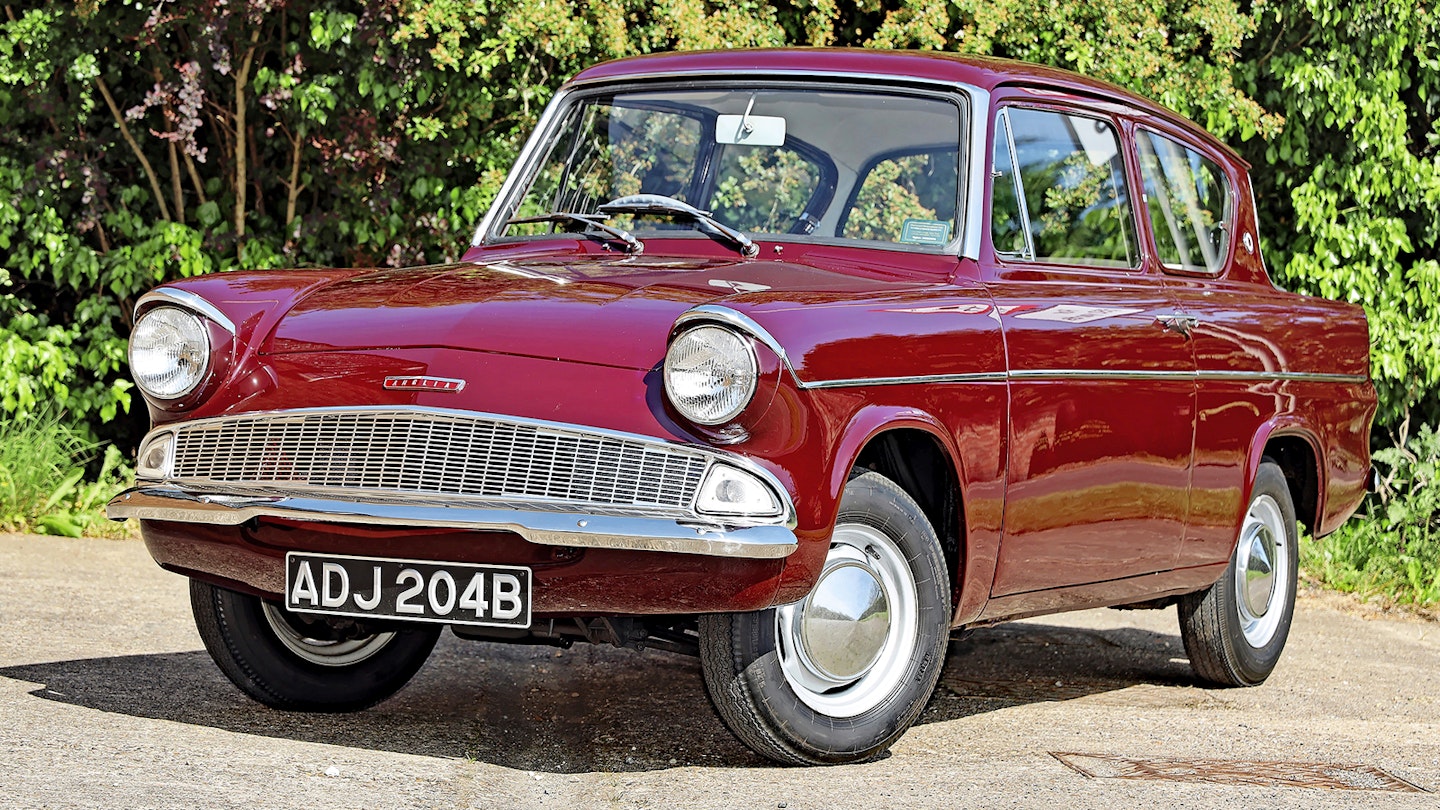What price the best Ford Anglia around? Richard Gunn investigates a serious contender for the crown
This is a high price for a Ford Anglia but, in our opinion, the condition does justify it. Both inside and out, it’s in lovely condition and is wonderful to drive. The only thing that it really needs is a better-quality set of tyres. Other than that, this is a real head-turner.
The condition of this Imperial Maroon Anglia is little short of exemplary. It was restored in 2015 by vendor Sherwood, at a cost of over £23,000, a process documented by a folder of receipts. Since then, it’s covered just a few hundred miles. Aside from a small chip showing the undercoat on the front nearside wheelarch, there are virtually no paintwork flaws.
The brightwork is similarly very good – there’s just some very minor tarnishing noticeable up close on the hubcaps, while some of the Mazak castings display occasional pitting. It’s worst on the pas-senger door handle – which Sherwood plans to replace. Some of the door and window weather-stripping is a little aged in places. The tyres are crossplies, with one a remould and two from East Germany – which hasn’t existed since 1990.

This Anglia’s basic yet stylish interior is in very good order; the two-tone grey vinyl seats show hard-ly any signs of use, with everything around them – such as the door cards and rubber mats – simi-larly well-preserved. There’s no radio installed. There is an extra plunger button fitted under the headlamp knob for the windscreen washers. Because it’s black, it clashes with the other controls. For nit-pickers, there’s a bit of cosmetic rust at the top of the gearstick, where years of finger-tip contact have worn some of the grey paint away, and some ageing marks on the driver’s plastic in-strument panel.
After the rest of this car, it comes as no real surprise that the engine bay is similarly excellent. It has been well-detailed and is so clean that the most noticeable blemish is the patchy maroon paint daubed on the radiator cap. Elsewhere, it looks like the circular air filter housing was repainted yesterday, while the area around the clutch and brake master cylinder shows no damage from fluid spills, as is often found on these Anglias. Both MacPherson strut top mounts are sound. So original-looking is the engine bay that the purple plug leads look out of place.

The four-cylinder overhead-valve engine starts readily from cold, and ticks over beautifully, even when having to use choke – which can soon be pressed home. This is an easy car to drive, and feels featherweight. The clutch pedal requires barely any effort, and the gear-lever action is delightfully smooth. The steering is also free from any heaviness, while the 997cc engine feels lively and en-thusiastic. Only the brakes require a little bit of effort because they’re drums all around, so benefit from some heft. But they stop this small Ford straight and quickly.
Aside from the restoration invoices and a few recent MoT certificates, there’s little by way of ser-vice history, but the condition of this Anglia speaks for itself.
This Ford Anglia is one of four Ads on Test in the latest issue ofClassic Cars.
Engine 997cc four-cylinder, ohv, Autolite C6AH-9510C carburettor Power 39bhp @ 5000rpm Torque 52lb ft @ 2700rpm 0-60mph 29.4sec Top speed 77mph Fuel consumption 29-40mpg Length 3912mm Width 1422mm
